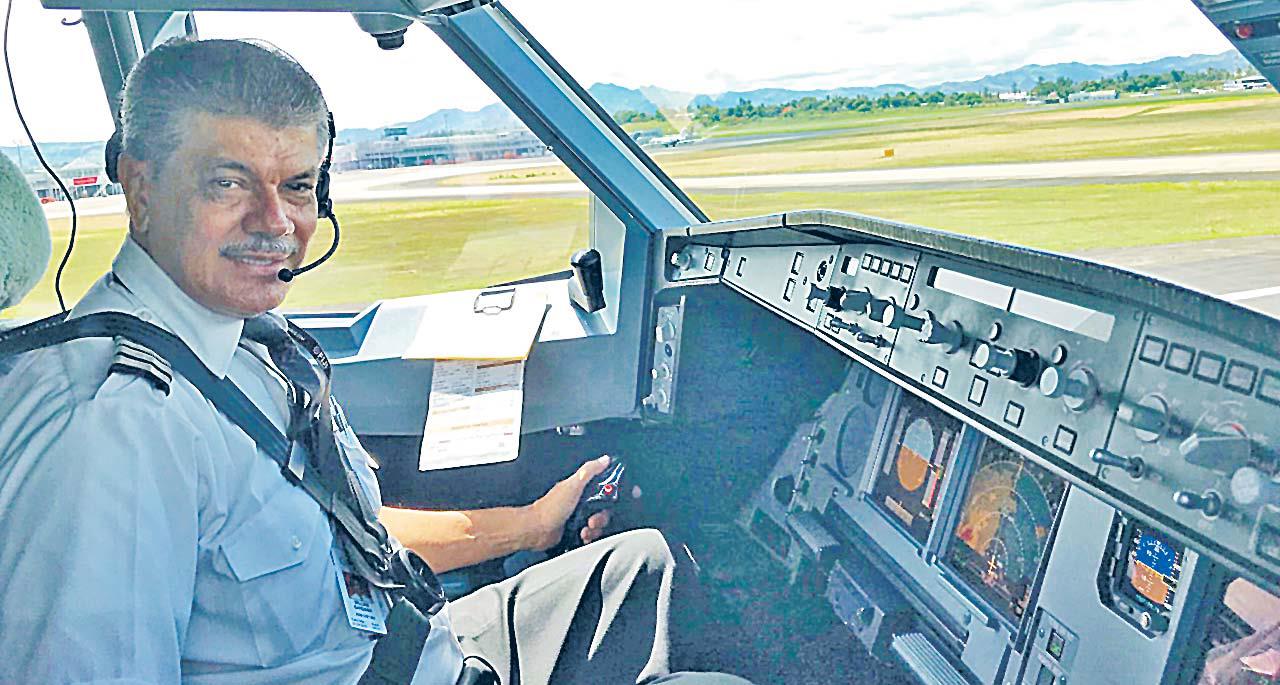LIKE most young children, William Gardiner was fascinated when he first saw an aeroplane.
A young lad, he accompanied his father to Nadi Airport where he worked as a postmaster. It was during this time that he had his first brush with aviation.
His goal then became clear — he would one day pilot those metallic birds and cement his name in the industry.
Needless to say, he did just that, retiring from active duty last year after spending a whopping 45 years as a pilot for national carrier Fiji Airways.
This long service has seen him through some of the most pressing changes that the national carrier undertook or experienced over the years.
His journey, he says, while inspirational, has not been without its challenges.
“He (my father) was a postmaster so I used to go down with him when he used to work at Nadi Airport and all the planes used to come there,” he shared.
“In those days, there was no security so you could go in and sit in the planes’ cockpits, talk to pilots and while we didn’t go flying, that’s how it all started and I got interested in aviation from there.
“Then they started bringing in fancy planes and we always had a chance to go and see it. The first jet came, I can’t remember the year it was in, but when the first Qantas jet came, we sat on a hill and watched it.”
After high school, he was one of 14 locals who were given the opportunity to study in England and obtain flying licences.
“We got a British Government scholarship to train in England and it was called the British Council in those days.
“It was a scholarship given to about 14 of us locals mainly to complete flying lessons and just to get yourself qualified. I spent about two years in England and then came back and flew for the airline.”
The graduates, who were among the first locals to fly, were tasked with domestic flights, which was part of the airline’s earliest operations.
“When I started it was just changing to Air Pacific and now it’s gone back to Fiji Airways. This was long before any flying school was in Fiji.”
Some of those who had trained eventually sought greener pastures and moved to places such as Bangkok, Sydney and Auckland. The scholarships stopped for some reason some years later so they (students) started to pay on their own.
“Either their parents would pay or they would study and work and pay because it’s a very expensive training. Now, I think it costs $150,000 to $160,000 to get a licence and in our day, it was something like 50,000 to 60,000 pounds but that included all your board as you stayed at the school and were given a small allowance and meals. Once local pilots started taking the reins of the aircraft, they caught the notice of other young Fijians and sparked an interest in those interested in aviation.
“There were quite a few at the time but not too many,” Mr Gardiner says.
“They didn’t really know what a (local) pilot would be like so we were really the first set of guys to go away and when we came back and started flying locally, then people realised locals can do this.
“Like any other thing, if there’s no local pilot in the country flying, you don’t know much about it so we were really the first to start it. “We started on small airplanes, we did domestic for a few years, then started regional slowly to places like Funafuti, Tarawa, Samoa, Tonga slowly.
“In the beginning, Fiji Airways was just all domestic, this included Suva to Nadi, Suva to Labasa, and then airstrips on Taveuni and in Savusavu.
“Eventually international came, I think that started in the 70s or 80s, and flights were carried out to Australia and New Zealand, later to Honolulu.”
With this came his share of new experiences too.
Mr Gardiner says some of his most treasured memories were ferry flights, including bringing over Bandeirante aircraft from Brazil to Fiji.
“I took a jet back to England and then I took the 747 to the US on its final flight. It’s a bit sad for some of the aircraft. For example, the 747, the place where we took it, they cut it up and stripped it off engines and radios, equipment and seats and then
they cut the metal so that was a bit sad.”
In October last year, Mr Gardiner started his 45th year at the company.
“I reached 65 in January (this year). The law is that you can’t fl y internationally if you’re over 65 but you can fl y domestically.
“I didn’t want to. My wife still flies as cabin crew. I think 45 years is enough for me so I retired just before my birthday and that was it for me.”

right) with colleagues during training. Picture:
SUPPLIED/ WILLIAM GARDINER

surrounded by friends and family after carrying
out his last flight. Picture: SUPPLIED /
WILLIAM GARDINER
- Next week: We wrap up our series on the aviation industry. The final part will focus on the impact of local pilots in the industry and plans to integrate more locals in the future.



